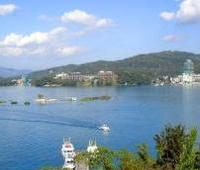Tourism Resumes Between Mainland China and Taiwan
China announced plans to resume group tours from Fujian and Shanghai to Taiwan, signaling increased cross-strait exchanges. This development comes as part of broader efforts to normalize people-to-people interactions between mainland China and Taiwan.

The recent announcement of resuming group tours from mainland China to Taiwan marks a significant shift in cross-strait relations. Starting with residents from Fujian Province and Shanghai, this initiative represents the first major tourism reopening since the suspension during the COVID-19 pandemic.
The history of cross-strait tourism has seen various phases of development and restriction. Prior to 2019, mainland residents from 47 cities could visit Taiwan individually through a permit system. However, this program was suspended in August 2019 due to changing cross-strait relations. Group tours were later halted in 2020 during the pandemic.
The economic implications of this reopening are substantial. Before the pandemic, Chinese tourists contributed significantly to Taiwan’s tourism sector. In 2023, Chinese outbound tourists spent approximately $196.5 billion globally, demonstrating the potential economic impact of this market. For Taiwan’s tourism industry, which has faced challenges in recent years, this reopening could provide much-needed revitalization.
The tourism resumption goes beyond mere economic benefits. It represents an important channel for cultural exchange and people-to-people connections. Popular destinations in Taiwan, including the National Palace Museum in Taipei, Sun Moon Lake in Nantou, and various night markets, have historically attracted mainland visitors interested in experiencing Taiwan’s unique blend of traditional Chinese culture and local innovations.
However, challenges remain in the implementation of this policy. Current arrangements are limited to group tours, with individual travel still restricted. The success of this initiative will depend on various factors, including the quality of tour services, the management of tourist flows, and the overall political climate between both sides.
This development also reflects a broader pattern in cross-strait relations, where civilian exchanges continue despite political tensions. The focus on tourism suggests a pragmatic approach to maintaining connections between people on both sides of the Taiwan Strait while navigating complex political realities.
The gradual nature of this reopening, beginning with specific regions, indicates a cautious but progressive approach to normalizing cross-strait exchanges. This strategy allows for careful monitoring and adjustment of the program while building confidence in the renewed tourism relationship.
For mainland Chinese tourists planning to visit Taiwan, the experience offers unique perspectives on the region’s cultural heritage, modern development, and social dynamics. Similarly, the influx of mainland visitors provides opportunities for Taiwan residents to engage directly with mainland Chinese people, potentially fostering better mutual understanding.
This resumption of group tours may serve as a testing ground for broader tourism exchanges in the future. Its success could pave the way for expanded travel opportunities, including the potential restoration of individual travel permits and increased flight connections between mainland China and Taiwan.